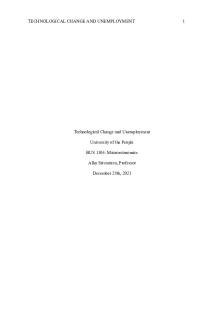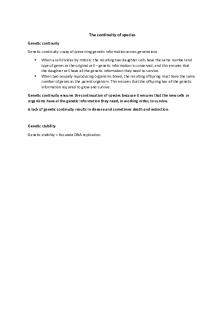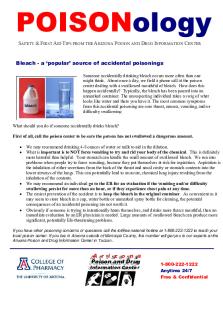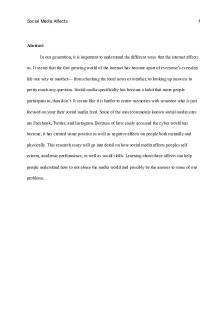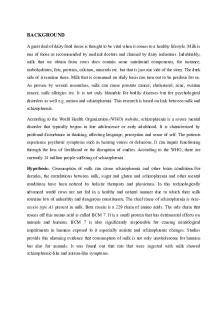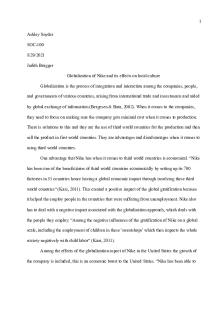Oc spray and its effects PDF

| Title | Oc spray and its effects |
|---|---|
| Course | Introduction Law Enforcement |
| Institution | South Florida State College |
| Pages | 3 |
| File Size | 38.9 KB |
| File Type | |
| Total Downloads | 55 |
| Total Views | 182 |
Summary
Download Oc spray and its effects PDF
Description
Pepper spray or OC spray is commonly used by law enforcement and corrections agencies across the United States to assist in subduing and arresting people whose behavior is violent or uncooperative. Individuals may also use it to defend themselves against human or animal attack. Its use is sometimes controversial (a chemical compound that irritates the eyes to cause tears, pain, and temporary blindness) used in policing, riot control, crowd control, against protestors, and personal self-defense, including defense against dogs and bears Its inflammatory effects cause the eyes to close, taking away vision. This temporary blindness allows officers to more easily restrain subjects and permits people using pepper spray for selfdefense an opportunity to escape. Although considered a less-than-lethal agent, it has been deadly in rare cases, and concerns have been raised about a number of deaths where being pepper sprayed may have been a contributing factor. Generally it expires in 3 months. The active ingredient in pepper spray is capsaicin, which is a chemical derived from the fruit of plants in the Capsicum genus, including chilis. Extraction of oleoresin capsicum (OC) from peppers requires capsicum to be finely ground, from which capsaicin is then extracted using an organic solvent such as ethanol. The solvent is then evaporated, and the remaining waxlike resin is the oleoresin capsicum.
An emulsifier such as propylene glycol is used to suspend OC in water, and pressurized to make it aerosol in pepper spray. The high performance liquid chromatography (HPLC) method is used to measure the amount of capsaicin and major capsaicinoids within pepper sprays.
Determining the strength of different manufacturers of pepper sprays can be confusing and difficult. Statements a company makes about their product strength are not regulated. A method using the capsaicin and related capsaicinoids (CRC) content of the product is unreliable as well, because there are six different types of capsaicinoids, causing different levels of irritation. Manufacturers do not state which particular type of capsaicinoids are used. Personal pepper sprays can range from a low of 0.18% to a high of 3%. Most law enforcement pepper sprays use between 1.3% and 2%. The federal government of the United States has determined that bear attack deterrent sprays must contain at least 1.0% and not more than 2% CRC. CRC does not measure the amount of OC within the formulation. Instead, CRC is the pain-producing component of the OC that produces the burning sensation. Pretty much it is hell in a can, even thinking about re-living my pepper spray endeavor is painful. It causes immediate closing of the eyes, difficulty breathing, runny nose, and coughing. The duration of its effects depends on the strength of the spray, but the average full effect lasts around thirty to forty-five minutes, with diminished effects lasting for hours. For individuals not previously exposed to OC effects, the general feelings after being sprayed can be best likened to being "set alight." The initial reaction should the spray be directed at the face, is the completely involuntary closing of the eyes (sometimes described as leading to a disconcerting sensation of the eyelids "bubbling and boiling" as the chemical acts on the skin), an instant sensation of the restriction of the airways and the general feeling of sudden and intense, searing pain about the face, nose, and throat. Coughing almost always follows the initial spray
Short rapid breaths through the nose or mouth lead to ingestion of the chemical, which feeds the feeling of choking. Police are trained to repeatedly instruct targets to "breathe normally" if they complain of difficulty, as the shock of the exposure can generate considerable panic as opposed to actual physical symptoms....
Similar Free PDFs

Oc spray and its effects
- 3 Pages

Print OC
- 45 Pages

OBAT NYAMUK SPRAY
- 11 Pages

ASTM B117 Salt spray
- 10 Pages

OC Template
- 11 Pages

Geschiedenis OC
- 19 Pages

Notatki OC
- 16 Pages
Popular Institutions
- Tinajero National High School - Annex
- Politeknik Caltex Riau
- Yokohama City University
- SGT University
- University of Al-Qadisiyah
- Divine Word College of Vigan
- Techniek College Rotterdam
- Universidade de Santiago
- Universiti Teknologi MARA Cawangan Johor Kampus Pasir Gudang
- Poltekkes Kemenkes Yogyakarta
- Baguio City National High School
- Colegio san marcos
- preparatoria uno
- Centro de Bachillerato Tecnológico Industrial y de Servicios No. 107
- Dalian Maritime University
- Quang Trung Secondary School
- Colegio Tecnológico en Informática
- Corporación Regional de Educación Superior
- Grupo CEDVA
- Dar Al Uloom University
- Centro de Estudios Preuniversitarios de la Universidad Nacional de Ingeniería
- 上智大学
- Aakash International School, Nuna Majara
- San Felipe Neri Catholic School
- Kang Chiao International School - New Taipei City
- Misamis Occidental National High School
- Institución Educativa Escuela Normal Juan Ladrilleros
- Kolehiyo ng Pantukan
- Batanes State College
- Instituto Continental
- Sekolah Menengah Kejuruan Kesehatan Kaltara (Tarakan)
- Colegio de La Inmaculada Concepcion - Cebu
